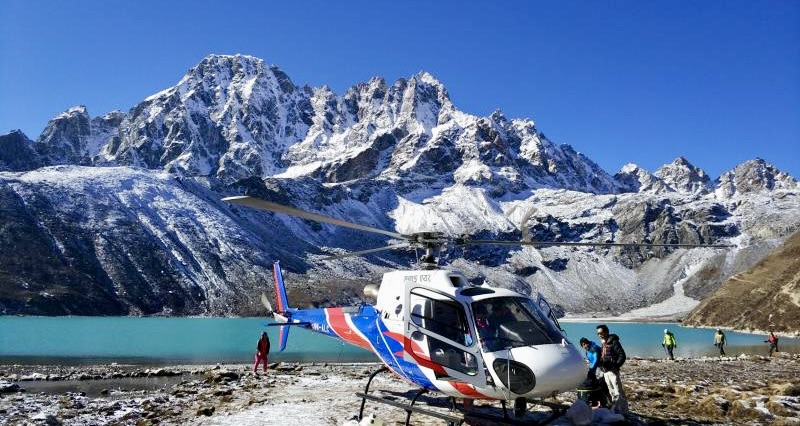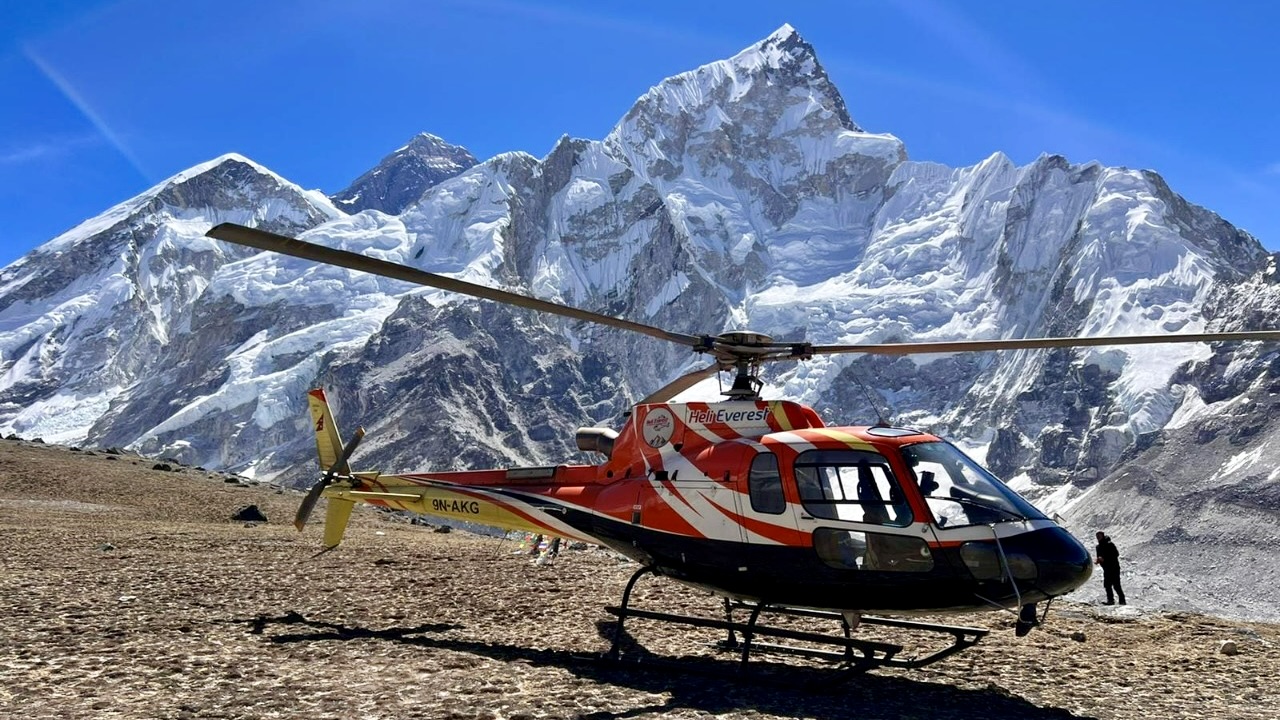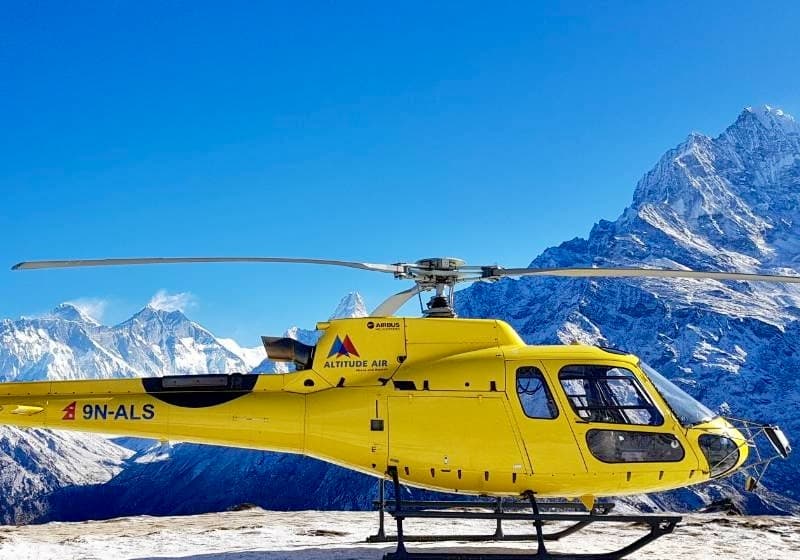Weather plays a crucial role in the success and safety of an Everest helicopter landing tour. The mountain weather in the Everest region can be unpredictable, and understanding the weather patterns and choosing the right time for your tour is essential.

Here is a comprehensive overview of the weather during an Everest helicopter landing tour:
Best Time for the Tour
The best time for an Everest helicopter landing tour is during the spring (March-May) and autumn (September-November) seasons. These periods generally offer stable weather conditions, clear skies, and optimal visibility, providing the best views of Mount Everest and the surrounding peaks.
The weather during Spring (March-May)
- This season experiences mild to moderate temperatures, with daytime temperatures ranging from 10°C to 20°C (50°F to 68°F) in lower elevations and slightly cooler temperatures at higher altitudes.
- Clear skies and good visibility are common during this period, making it an ideal time for helicopter tours.
- The spring season is also when the rhododendron forests bloom, adding a splash of color to the landscape.

The weather during Autumn (September-November)
- Autumn also offers mild to moderate temperatures, similar to the spring season.
- The skies are usually clear, and visibility is excellent during this time, following the monsoon season, which typically ends in September.
- The landscape appears lush and green after the monsoon rains, enhancing the overall scenic beauty of the region

Weather during Winter (December-February) and Summer (June-August)
- Winter and summer months are considered less favorable for helicopter tours due to the increased likelihood of unfavorable weather conditions.
- Winter brings cold temperatures and occasional snowfall, which can make helicopter landings challenging and pose a risk to visibility.
- Summer, coinciding with the monsoon season, brings heavy rainfall, cloud cover, and reduced visibility, making helicopter tours riskier and less enjoyable.

Important Considerations
- Mountain weather can be unpredictable, and sudden changes in weather conditions may cause delays or cancellations of helicopter tours. Always consult with us and consider the weather forecast before booking your tour.
- Be flexible with your travel plans, as weather-related delays or cancellations may require rescheduling your helicopter tour.
- Dress in layers and bring appropriate clothing to adapt to changing weather conditions throughout your tour.
- Don't forget to pack sunglasses, sunscreen, and a hat to protect yourself from the sun.
By understanding the weather patterns in the Everest region and choosing the right time for your helicopter tour, you can maximize your chances of a safe and memorable experience. Always prioritize your safety and consult with us and the pilot for additional guidance on the weather during your tour.
If you need any further information, please contact us, Email: at [email protected], Phone: +977- 985 100 5129 (WhatsApp)




